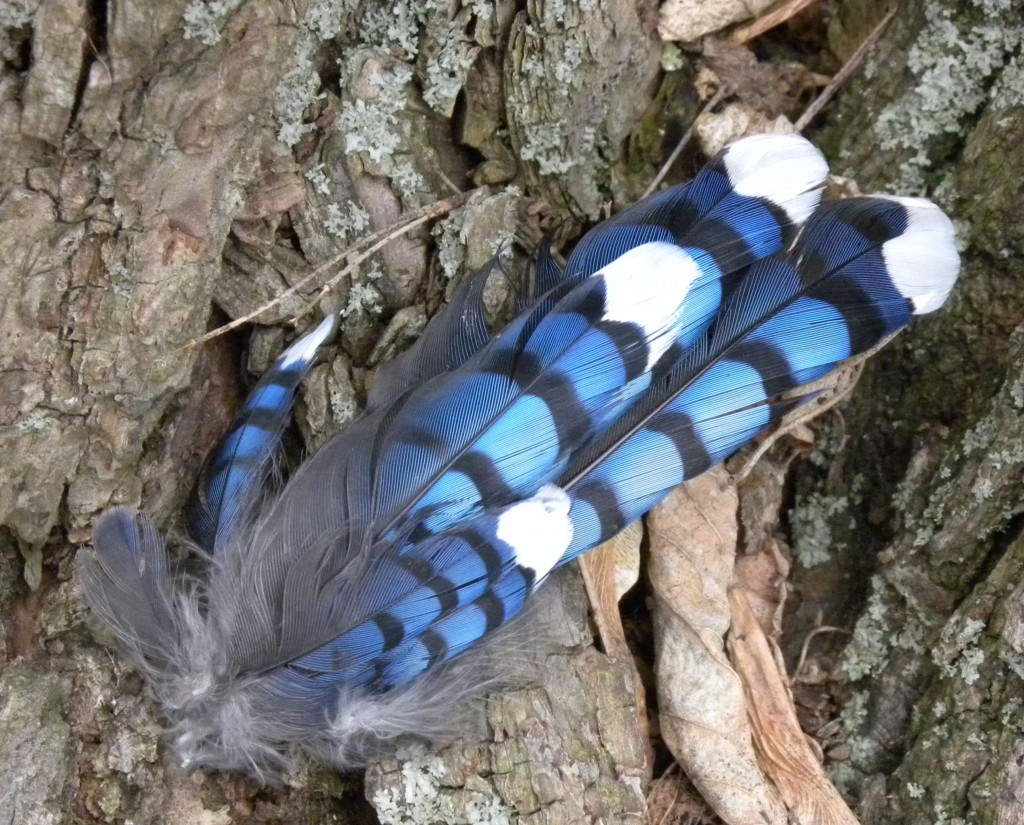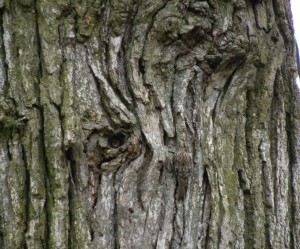November 5 2012. Ruthven Park Cayuga ON. At the bird observatory today any number of birds could have been my Bird of the Day. From the Great Blue Heron that rose ponderously out of the creek valley in the emerging grey light, the singing Carolina Wren that brightened up the census round or maybe the trio of Evening Grosbeaks hanging around the banding lab late in the morning. But it was the fragments of a Blue Jay that I liked best.

I wondered what had happened to the rest of the jay: taken by surprise by one of the many resident or migrant owls or maybe chased down among the trees by a Sharp-shinned Hawk; it could have been either. Whatever the cause, this fragment holds all of the pure and intense blues that make a Blue Jay one of our most easily recognized and loved birds. Look closely: there’s midnight blue, the sky-blue of high noon, and countless other intergrades and shades, some leading into purples and greys. White tips accentuate the purest blues of these wing feathers. Jays, especially the Flemish/European Jay, Mexican Jay, our Blue Jay and Steller’s Jay, really know how to use blue to good effect.
This is the last week of the fall banding season at the bird observatory, and today was my last scheduled day. I’ve always done the daily census when I’m there and as the days shorten it has become increasingly hard to fill a page with sightings. Today it was stiff-knuckle cold and stretches of riverside habitat that seem to always be lively with birds, from Tree Swallows and Common Yellowthroats in summer, through Red-winged Blackbirds, Song Sparrows and Golden-Crowned Kinglets as recently as two weeks ago, are all but silent now. So the early-light Great Blue Heron was a pleasant surprise. There are always a few reports of lingering herons every winter, but finding food must be tough what with the frogs hunkered down in the muddy depths and the creeks and rivers either too turbid or (coming soon) lidded with ice.
I found a group of four busy Tufted Titmouse working over the tops of some Northern Hackberry and Bitternut Hickory trees

and was pleased with an almost impossible to photograph Brown Creeper.
The Evening Grosbeaks only managed a fleeting visit, I was returning to the banding lab where a group of school children were learning about avian fat storage, when I spotted the three grosbeaks in a tree overlooking one of the many feeders around the place. I assumed they’d been there for a while and that everyone knew about them, but my casual mention of them caused a bit of excitement, so we all went outside to see them, but they were gone. That’s birding for you.
Ha, I had to double click the find the creeper and then look real hard. Cool little birds.